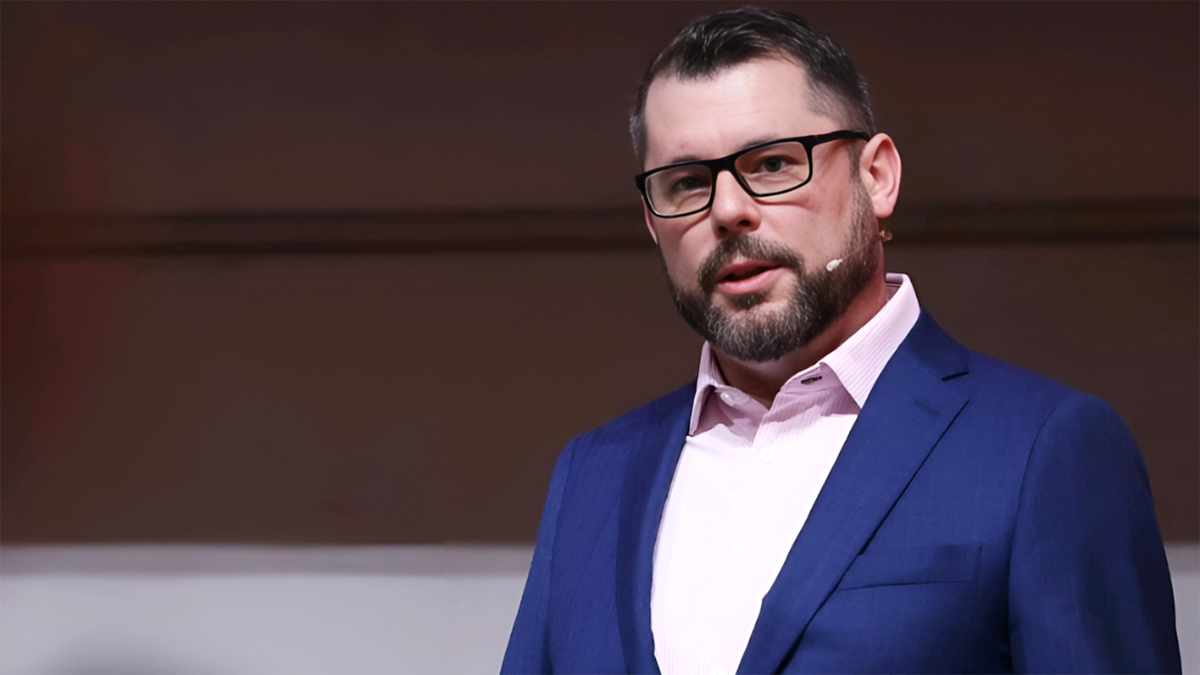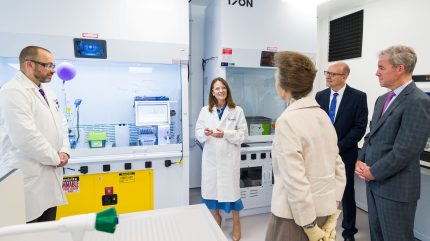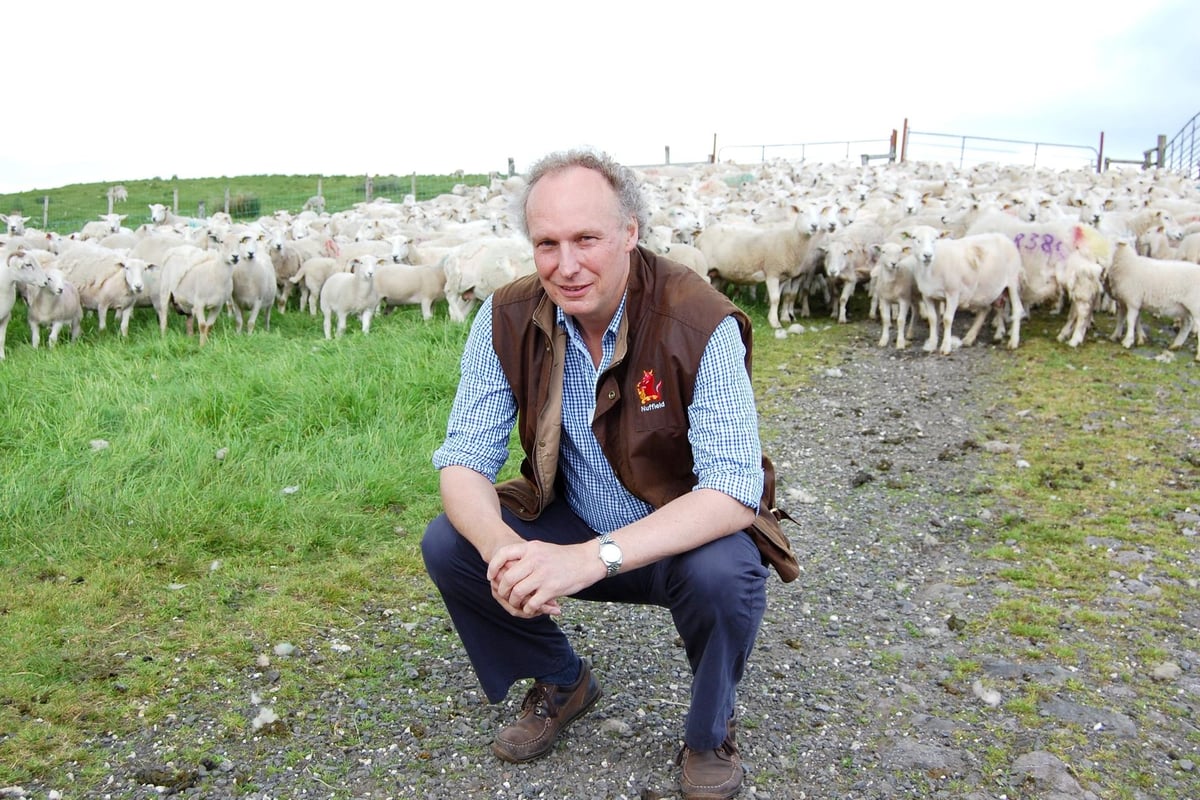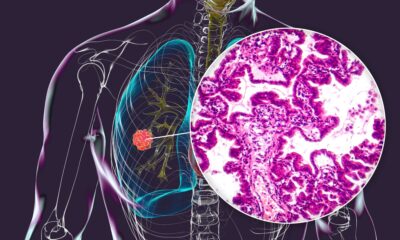Science
Harvard Scientist Claims ‘Hostile’ Object Approaches Earth

An interstellar object named 3I/ATLAS is heading towards the inner solar system at remarkable speeds, raising eyebrows among researchers. Detected on July 1, 2025, the object is estimated to be 12 to 15 miles wide and is moving at approximately 135,000 miles per hour (217,000 kilometers per hour). The trajectory of 3I/ATLAS is highly unusual, prompting speculation about its origins and purpose.
This object is the third confirmed interstellar entity observed in our solar system, following 1I/ʻOumuamua in 2017 and 2I/Borisov in 2019. Initial assessments indicate that 3I/ATLAS is significantly larger than its predecessors, with a diameter estimated at around 7 miles (11 kilometers). It is projected to reach perihelion, its closest point to the Sun, on October 30, 2025, or early November 2025. Its inbound path includes gravitational interactions with Venus, Mars, and Jupiter, which has prompted additional scrutiny from the scientific community.
Controversial Theories Spark Debate
A paper by Harvard astrophysicist Professor Avi Loeb, along with researchers Adam Hibberd and Adam Crowl, has stirred significant controversy. Titled “Is the Interstellar Object 3I/ATLAS Alien Technology?”, the study suggests that the object may not be a natural formation but rather a technological artifact of extraterrestrial origin. The researchers argue that the object’s flybys could be intentional maneuvers aimed at deploying observational or reconnaissance devices.
In the paper, Professor Loeb describes the object as a potential “hostile” probe. Yet, he acknowledges that “by far, the most likely outcome will be that 3I/ATLAS is a completely natural interstellar object, probably a comet.” This admission highlights the dual nature of the hypothesis surrounding 3I/ATLAS, which has drawn both intrigue and skepticism.
Critics within the scientific community have largely dismissed the notion of an alien probe. Chris Lintott, an astronomer at the University of Oxford, termed the idea “nonsense on stilts” in correspondence with Live Science. Similarly, Dr. Samantha Lawler of the University of Regina remarked that “the vast majority of scientists subscribe to the idea that extraordinary claims require extraordinary evidence, and the evidence presented is absolutely not extraordinary.”
Many astronomers point out that 3I/ATLAS exhibits no signs of propulsion, targeted trajectory changes, or radio emissions that would indicate an artificial origin. Observations have confirmed the presence of a visible coma, a characteristic feature of comets that aligns with expected behavior for such objects.
Future Observations and Safety Concerns
As 3I/ATLAS approaches perihelion, it is expected to pass on the far side of the Sun, which may limit direct observation during its closest approach. Nevertheless, telescopes and space agencies, including NASA and the European Space Agency, are actively tracking its trajectory and behavior. Researchers are preparing to analyze the object’s outgassing, light reflection, and any potential electromagnetic signatures that may emerge as it nears the Sun.
At its closest point, 3I/ATLAS will maintain a safe distance of approximately 149 million miles (240 million kilometers) from Earth, posing no immediate threat to our planet. As more data becomes available, scientists hope to definitively determine whether 3I/ATLAS is a natural interstellar traveler or something far more enigmatic.
Science
Tom Driscoll on Clear Communication and the Future of Radar Tech

Tom Driscoll, founder and chief technology officer of the Seattle-based firm Echoydne, emphasizes the importance of clear communication in the tech industry. With a PhD in physics from the University of California, San Diego, Driscoll has dedicated his career to developing radar technology using metamaterials for both commercial and defense applications. His previous role as managing director of the Metamaterials Commercialization Center at the technology incubator Intellectual Ventures has further shaped his perspective on the challenges of effective communication in complex fields.
Driscoll believes that the difficulty of communicating technical concepts is often underestimated. He asserts, “Crafting clear communication is something that I try to give extra time and attention to myself.” This commitment extends to his team at Echoydne, where he encourages open dialogue and clarity in discussions surrounding technology and product development. As the company navigates advancements in radar technology, Driscoll sees every task, regardless of size, as a vital contribution to creating a safer world in the face of increasing threats from autonomous weapons.
While Driscoll is passionate about his work and the talented individuals he collaborates with, he openly shares his frustration with PowerPoint presentations. He describes it as “the least effective and most time-consuming ways of communicating ever created.” Despite this sentiment, he acknowledges the necessity of adapting to customers’ preferences, which often means using PowerPoint in business settings.
Reflecting on his journey in the hardware start-up realm, Driscoll notes that anyone who believes developing a product will take only three to four years is misinformed. He describes the past 11 years as an incredible learning experience, stating, “I believe that learning things is often more valuable than knowing things.”
Driscoll’s insights highlight a broader issue in the tech industry: the need for clear and effective communication, particularly as teams expand and projects grow in complexity. His perspective serves as a reminder that no matter the advancements in technology, the human element of understanding and communication remains crucial.
If given the opportunity to revisit his early career, Driscoll expresses a desire to make adjustments. Yet, he firmly believes that the learning process is invaluable, stating, “Would I hand myself a cheat-sheet that let me skip all the learning? Absolutely not!” This commitment to growth and clarity reflects not only his personal philosophy but also the culture he aims to foster within Echoydne.
Science
Insmed Launches Innovation Centre to Advance Genetic Therapies

Insmed, a US-based biopharmaceutical firm, has officially launched its innovation centre at the Babraham Research Campus in Cambridge, UK, marking a significant step in its pursuit of advanced genetic therapeutics. The facility, which spans 17,000 square feet, was inaugurated in mid-July 2025 with a ceremony attended by Her Royal Highness, The Princess Royal. This new hub is pivotal to Insmed’s strategic shift towards synthetic rescue, a revolutionary approach aimed at manipulating cellular pathways to restore normal function.
Leading this initiative is Dr Tom Heightman, Senior Vice President and Head of Research at the Cambridge site. With over 25 years of experience in the pharmaceutical industry, Heightman has previously held key positions at major companies such as GlaxoSmithKline and AstraZeneca. He played a crucial role in transforming Adrestia, which was acquired by Insmed in 2023. Heightman highlighted the synergy between the two companies, stating, “Our early-stage target discovery and drug discovery platform was well suited to Insmed because they wanted to invest some of their clinical success in building a longer-term pipeline.”
Innovative Approach to Rare Diseases
Synthetic rescue is positioned as the opposite of synthetic lethality, a concept prevalent in oncology. While synthetic lethality involves two gene disruptions that lead to cell death, synthetic rescue aims to identify alternative pathways that can restore health when a critical gene is compromised. Insmed’s platform combines whole-genome CRISPR screens, high-throughput validation, and extensive human genetic data analysis with computational drug design.
Heightman describes this combination as their “secret sauce.” He elaborated, “What makes this facility unique is two-fold. First, the synthetic rescue platform itself. Second, the ability to execute end-to-end drug discovery in one place: genetic discovery, data science, computational chemistry and wet-lab synthesis.” Although currently consisting of around 80 staff, Insmed has integrated various scientific disciplines under one roof, a rarity for a company of its size.
The focus of the Cambridge team is on rare genetic disorders, particularly those affecting the central nervous system and neurodegenerative diseases. Heightman noted, “Synthetic rescue has broad applicability. It’s why both Adrestia and the Insmed leadership were drawn to it.” With nearly 7,000 recognized rare diseases, many lacking a clear mechanistic understanding, traditional drug discovery methods can be ineffective. Instead, the Cambridge team is developing assays and cell models from the ground up to deepen their understanding of the underlying biology and the impact on patients.
Collaboration and Future Prospects
Insmed’s Cambridge facility complements its other research sites in San Diego, New Hampshire, and New Jersey, each specializing in different modalities. San Diego focuses on gene therapy, New Hampshire on biologics, and New Jersey on lipid-formulated small molecules. Heightman explained that these sites operate as semi-independent hubs with specific focuses but convene every six months for a cross-site symposium to share breakthroughs and foster collaboration.
The company is also planning to optimize the use of capital-intensive equipment across its research hubs to minimize redundancy and leverage advanced tools effectively. Heightman noted promising progress in various early-stage projects during the first half of 2025, with the current objective of generating preclinical data to advance discoveries toward potential prototype medicines. “We intend to make this scientific second half of the year very rich – more data, more clarity on molecules moving through preclinical development,” he expressed.
In addition to internal collaboration, Insmed is promoting interaction between researchers and clinicians. Heightman remarked, “We’re starting to see clinical teams ask us questions where someone within our research groups has the right expertise to help. So, there’s a valuable two-way exchange, rather than just one-way communication.”
While artificial intelligence (AI) increasingly plays a role in drug discovery, Heightman maintains a cautious perspective. He stated, “It works best in areas where we have deep datasets, so now we’re seeing success in specific, well-defined problems. The hope is that future generations of AI will be able to integrate different data types more holistically, but for now, I think we still need human scientists to drive the process.”
Despite facing operational losses, Insmed continues to support its ongoing projects, including brensocatib for bronchiectasis, which is being financed through public market fundraising. In June 2025, the company announced a public offering worth $750 million to fund research and commercialization, reflecting strong investor confidence in its direction.
As Insmed solidifies its position in the UK’s life sciences sector, its commitment to synthetic rescue represents a broader shift in the approach to genetic diseases. While the science is still in its nascent stages and significant challenges remain, Insmed’s strategy of consolidating diverse capabilities under one roof positions it to explore these complex questions effectively. The viability of synthetic rescue will ultimately depend on the data generated and how successfully these insights can be transformed into meaningful treatments for patients.
Science
California Innovates Monitoring of Toxic Algal Blooms for Safety

Recent advancements in monitoring techniques promise to enhance how California tracks toxic algal blooms, a significant concern for water safety. Researchers from the California Department of Water Resources and California State University, Monterey Bay, have developed a new method that improves detection and analysis of harmful algal species in water bodies, particularly in areas like the San Luis Reservoir.
The San Luis Reservoir, located in Merced County, is a vital resource for the state’s agricultural sector and urban areas, supplying drinking water to regions including Silicon Valley and the South Bay. It also serves as a popular recreational destination, attracting swimmers, boaters, and anglers throughout the year. The presence of toxic algal blooms can pose serious health risks to both humans and wildlife, underscoring the importance of effective monitoring systems.
California’s Department of Water Resources has collaborated with scientists to implement a real-time monitoring system that utilizes advanced sensors. These sensors can detect algal blooms much earlier than traditional methods, which often rely on time-consuming laboratory tests. The new technology not only allows for quicker responses to potential health hazards but also enables better management of water resources.
In 2023, the National Oceanic and Atmospheric Administration (NOAA) reported a rise in the frequency of harmful algal blooms across the United States, with California being particularly affected due to its diverse ecosystems and climate variability. The heightened occurrence of these blooms has prompted state officials and researchers to seek innovative solutions.
This breakthrough in monitoring aligns with California’s ongoing efforts to safeguard its water supplies and protect public health. Improved detection methods can help mitigate the impact of algal blooms on recreational activities, ensuring that the water remains safe for public use.
The new monitoring system is expected to significantly reduce the time needed to identify and respond to algal blooms, which can develop rapidly under favorable environmental conditions. By providing timely data, the system empowers water managers to make informed decisions regarding water use and public safety.
As the technology continues to evolve, its implementation could set a precedent for other regions facing similar challenges with water quality and algal blooms. The collaboration between state agencies and academic institutions highlights a proactive approach to environmental management, which could lead to further innovations in water safety.
The advancements in monitoring toxic algal blooms not only reflect California’s commitment to environmental stewardship but also underscore the importance of research and technology in addressing public health concerns. With the new system in place, California aims to protect its valuable water resources and ensure a safer environment for its residents and visitors alike.
Science
Genomics Revolutionizes Sheep Farming at EasyCare Open Evening

The potential of genomics to enhance sheep farming will be showcased during the EasyCare open evening on July 30, 2024, at Ballycoose Farm, located near Carncastle in East Co Antrim. Hosted by Campbell Tweed, the event aims to highlight how genomic data can significantly drive performance in the sheep sector.
A representative from Signet explained the transition towards a genomic age, stating, “We are moving from genetic predictions based solely on pedigree and performance data to those that now incorporate genomic data.” This shift allows for a deeper understanding of the animal’s DNA variation and the individual genes it possesses.
Genomic data offers several applications, including sire and dam verification, which is crucial for pedigree societies. It also facilitates identifying parents in flocks that have moved away from single sire mating, a common practice in hill breeding programs. The representative noted, “Genotyping reveals the presence of major genes related to Scrapie resistance and muscle growth, as well as important fertility genes.”
The advantages of genomic information extend to traits that may only manifest in one sex, are expressed later in life, or are challenging to measure, such as methane emissions and meat quality. “Genomics can also help identify sheep suitable for specific breeding programs at a younger age,” the representative added.
Signet currently manages genomic evaluation systems for seven hill breeds and three terminal sire breeds. The organization is collaborating on various research projects with breeders and levy funders to integrate genomic data into maternal breeding programs, with plans to establish genomic breeding values for major maternal breeds in the coming years.
The genomic assessment initiative has recently expanded to Northern Ireland, where Signet is partnering with AgriSearch to enhance their growing database of genotypes. The representative emphasized the need for collaboration among farmers and stakeholders to realize the benefits of genomic assessments in the sheep sector.
The open evening will commence at 18:00, allowing attendees to view a selection of ewes, lambs, and rams from Tweed’s flock. The Ballycoose flock is known for its quality EasyCare bloodlines, which have been meticulously recorded through the Signet and Sheep Ireland programs.
Campbell Tweed shared, “The open evening provides a platform for visitors to observe the performance of our livestock. EasyCare sheep are recognized for their wool-shedding capabilities, but the core of the Ballycoose development program focuses on breeding ewes that excel in utilizing grass, ensuring optimal animal health, and allowing for outdoor lambing with minimal human intervention.”
As demand for EasyCare sheep continues to rise across the island of Ireland, Tweed highlighted the advantages these sheep offer to flock owners. “This trend reflects a growing acknowledgment of how EasyCare sheep enable owners to optimize their time while maintaining high performance levels,” he noted.
The evening will also feature members from the EasyCare Sheep Ireland Group, contributing to discussions and insights about the breed. Tweed farms alongside his wife, Isobel, and expressed gratitude to Dunbia for their support of the event.
Tweed is currently accepting orders for breeding EasyCare ewes, lambs, and rams throughout Ireland and the UK, emphasizing the value of fully recorded stock. He stated, “We are offering livestock that can significantly enhance any sheep enterprise. The increasing demand for EasyCare bloodlines is a promising trend.”
For further inquiries regarding the event or breeding stock, interested parties can contact Campbell Tweed at 07802 835355.
-

 Politics2 weeks ago
Politics2 weeks agoPlane Crash at Southend Airport Claims Four Lives After Takeoff
-

 Top Stories2 weeks ago
Top Stories2 weeks agoAustralian Man Arrested for Alleged Damage to Stone of Destiny
-

 Business2 weeks ago
Business2 weeks agoTrump’s “One Big Beautiful Bill” Faces Economic Scrutiny
-

 Business2 weeks ago
Business2 weeks agoNew Study Links Economic Inequality to Lower Well-Being Globally
-

 Sports2 weeks ago
Sports2 weeks agoSheffield United’s Young Talent Embraces Championship Opportunity
-

 Health2 weeks ago
Health2 weeks agoAI Tool EAGLE Streamlines Lung Cancer Mutation Detection
-

 Lifestyle2 weeks ago
Lifestyle2 weeks agoBrits Identify Adulting Challenges: Cleaning, Cooking, and Time Woes
-

 Science2 weeks ago
Science2 weeks agoStudy Reveals Widespread Flooding in North Carolina Exceeds Expectations
-

 Sports2 weeks ago
Sports2 weeks agoEverton Pursues Johan Bakayoko as Transfer Deadline Approaches
-

 Politics2 weeks ago
Politics2 weeks agoUncertain Future for The Royal Albert Pub as Landlord Departs
-

 Science2 weeks ago
Science2 weeks agoNASA’s New Horizons Demonstrates Innovative Star Navigation Method
-

 Top Stories2 weeks ago
Top Stories2 weeks agoProtests Erupt in Niksic as Officials Celebrate Controversial Events











